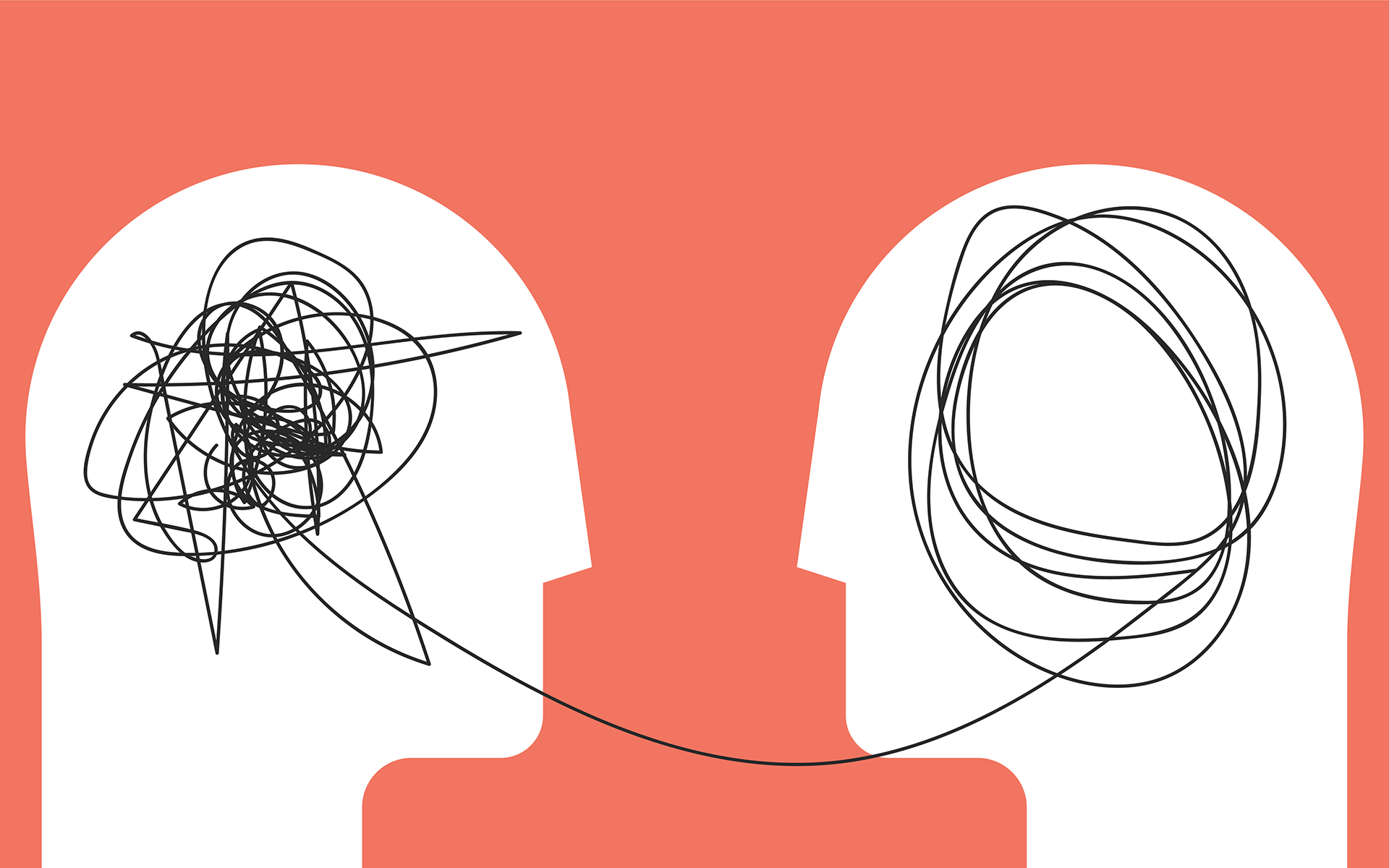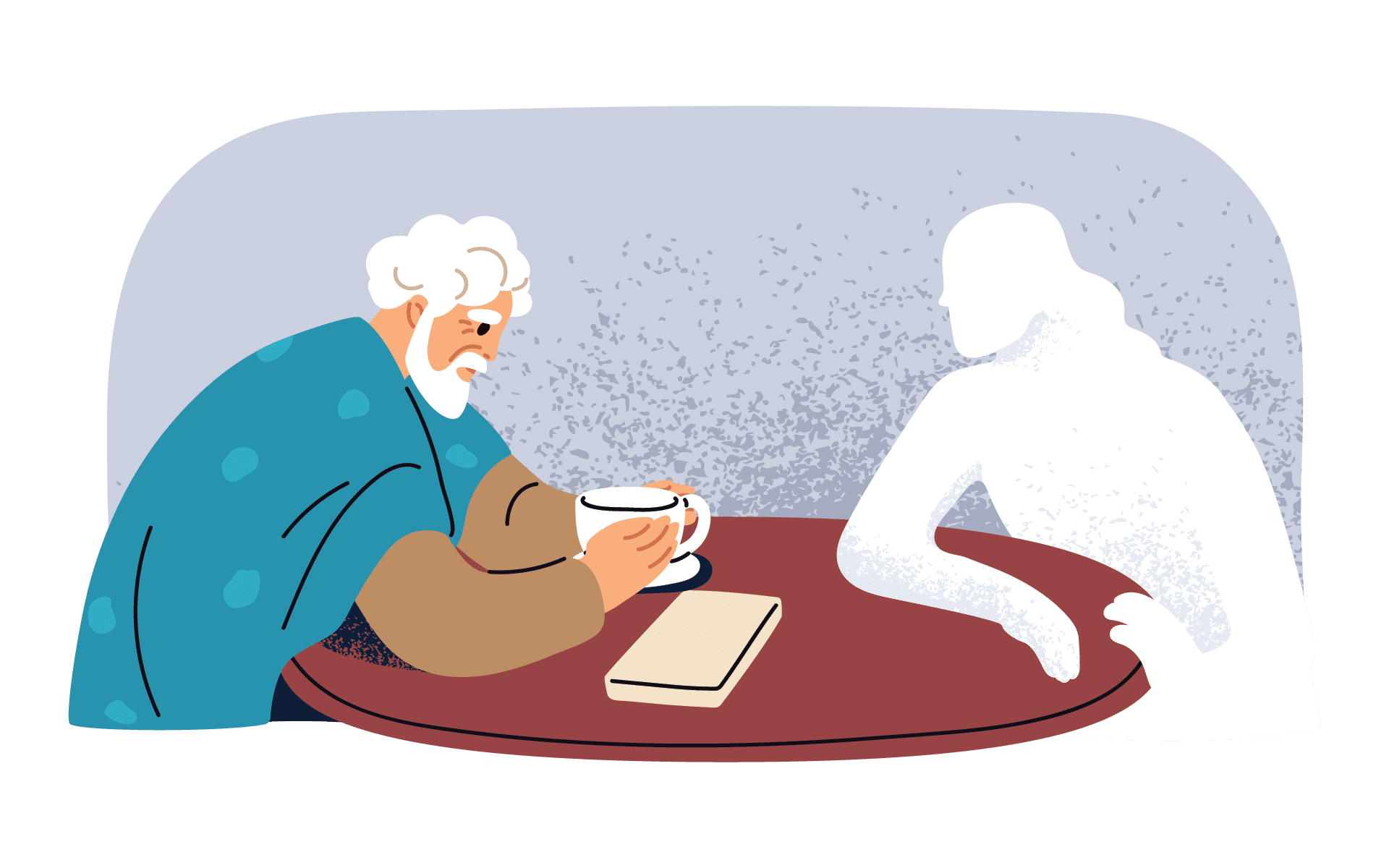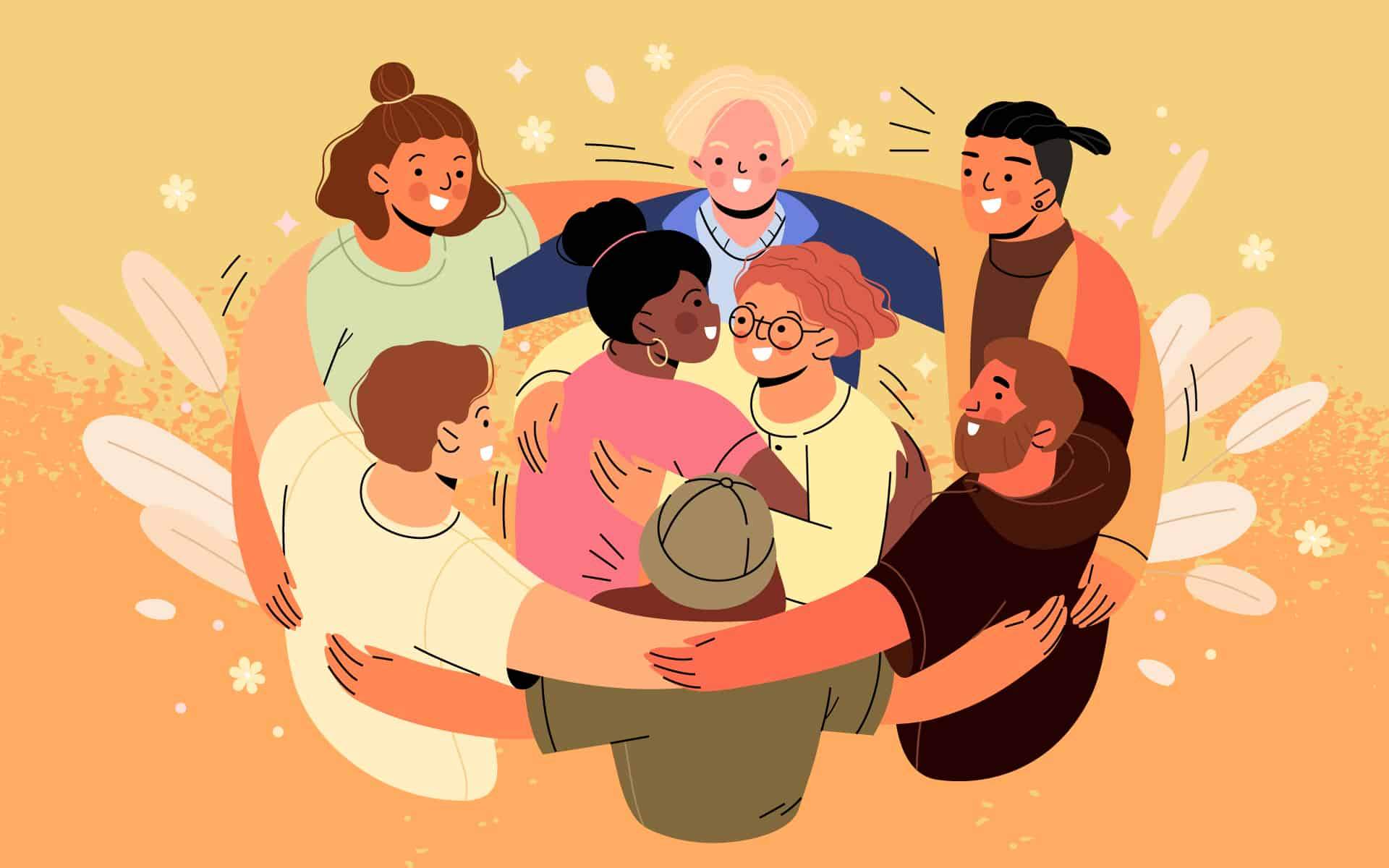Zindel Segal and Sona Dimidjian know from extensive study that Mindfulness-Based Cognitive Therapy (MBCT) is highly effective in helping people who struggle with anxiety and depression, which is why they want more people to have access to the therapy. Segal is a codeveloper of MBCT and a Distinguished Professor of Psychology and Mood Disorders at the University of Toronto, and Dimidjian is a professor in the department of psychology and neuroscience and director of the Renée Crown Wellness Institute at the University of Colorado Boulder. Together, they founded Mindful Noggin, an online home for their MBCT courses that makes their programming more accessible. They tested the program concept in a randomized clinical trial of 460 participants with residual depressive symptoms and published results demonstrating effectiveness in JAMA Psychiatry. Here, Mindful’s founding editor Barry Boyce speaks with Segal and Dimidjian about what MBCT has to offer, who can benefit from it, and the ups and downs that led to the conception of Mindful Noggin.
Listen to the Full Conversation:
Founding Editor Barry Boyce Speaks with Zindel Segal and Sona Dimidjian
BB: Let’s talk a little bit about how MBCT helps people—now that you’ve had decades of experience with how it’s been used and what the results have been.
ZS: Our initial motivation was to try and establish a firm scientific basis for teaching people psychological skills for managing a mood disorder in the long-term. They could take these skills into their own lives when therapy was over—the exact time when someone needs to really look after themselves because of the risk of relapse. We saw mindfulness practice as very well-suited to enable people to develop that resilience.
However, it was considered completely exotic in the realm of traditional psychiatry and mental health treatment. By introducing it in a structured, protocol-driven way and conducting randomized trials, we hoped to discover whether it was effective, and if so, show that it not only doesn’t do harm, but that it actually holds its own against the standard of care: antidepressant medication. Around the world, studies began making that case and continue to do so. From an efficacy point of view, MBCT really does provide people with protection on par with what they might get from continuing treatment with an antidepressant.
Now, all these years down the road, the agenda has shifted not just toward efficacy, but toward trying to be more specific about precisely what MBCT provides people and the ways we see that the benefits it offers are developed. We have some preliminary data we’ve analyzed that seems to indicate that one dimension that MBCT addresses is the ability to teach people how to disidentify with mental contents (or thoughts). That’s a very important message to communicate in the mindfulness world, because sometimes mindfulness is confused with relaxation or as sitting outside of compassion.
From the MBCT perspective, what we would like to say is that the most effective way of teaching this program is to emphasize participants’ developing the skill of watching the mind and approaching the content with kindness and curiosity. It doesn’t rule out compassion. It doesn’t rule out being relaxed or being calm. But if those are the only ingredients being put forward, what’s really missing is the capacity to take advantage of this specified skill, which takes a stance on experience that is anti-ruminative, that is present-based, and that works against the natural tendencies of the mind to dwell and to perpetuate depressive symptoms.
BB: What are some of the main conditions that people present with that would make MBCT effective for them?
SD: The initial evidence base for MBCT clearly focuses on prevention of relapse and recurrence for people who have experienced major depressive disorder. Zindel and I have also written, as have others, that there has been an exciting expansion of evidence looking at ways the MBCT program is actually helpful across a wide range of challenges that people experience—some of which are close cousins of depression, such as anxiety and stress. It’s also been examined in the context of managing chronic health problems.
The thoughtful expansion of the use of MBCT to help support people in sustaining wellness in the context of chronic or relapsing challenges is an exciting area of research right now.
BB: I want to delve a little further into the value of disidentifying with mental content, why having metacognition enables you to be aware of the content of your thoughts and then to disidentify with that. Why is that so valuable to people with mood disorders?
ZS: You are not your thoughts. Thoughts are not facts. Anxiety disorders characterized by worries—generalized anxiety disorder, social anxiety disorder, depression, and other disorders—share a common feature: it’s very easy for people to identify with the kind of thoughts that are surging when certain emotions are present. Sadness brings with it the tendency to devalue and anxiety brings with it a tendency to catastrophize, and then people become locked into seeing the thoughts that come to mind in those moments as real. In depression, it can often be a kind of ruminative problem-solving or brooding. In anxiety, it can be avoidance or inhibition. Reactions like these give rise to actions that have consequences both to the person and to the people around them.
It’s really hard to see that our thoughts can actually be viewed from a different perspective, where they may lose some of the command they have over us and can be watched as events in the mind.
It’s really hard to see that our thoughts can actually be viewed from a different perspective, where they may lose some of the command they have over us and can be watched as events in the mind. Thoughts can arise. Thoughts can rest and pass through the mind without having to necessarily be followed and obeyed. It’s not an easy thing to do. That’s why a lot of the training in the MBCT program starts with disidentifying with stimuli that are less threatening. For example, watching a sensation in your body, noticing its intensity, noticing what happens to it from moment to moment; listening to a sound, trying to localize it in your environment, describing its qualities; and then doing this very same thing with thoughts. If people are able to do that, there’s a measure of liberation, a measure of freedom from the thoughts they are experiencing. There’s the possibility of a choice that is different from a reflexive way of responding to things being said, judgments being made, futures and horizons being considered.
This is why I think the promise of MBCT in managing these conditions is quite strong. There is also very good brain science that indicates the neural networks that are engaged in continuing to support this type of processing can be undone through focusing attention on other networks that support interoceptive and sensory awareness. It’s connecting with sensations and present-moment awareness that can sometimes give us a chance of getting unstuck from our thoughts.
SD: The implications of what we’re talking about are both specific as well as vast in terms of people’s life experience. There’s relevance to both how to cope with the challenging moments in life, as well as how to stay present for the times in life that offer a lot of reward and meaning and purpose. I’ll just give an example. My daughter, who’s a first-year college student, was very sick for a week. I found myself having moments of taking care of her, even though she is 18 years old, that were similar to taking care of a younger child, a kind of automatic pattern. And one of the ways you can begin to see these habits of mind that run in these very automatic ways is around the what ifs. What if she doesn’t get better? What if it gets worse? What if it’s this? What if it’s that? In MBCT, we talk about this kind of automatic pilot, the way the mind can get on this very fast train, that you come to realize has carried you miles and miles away from where you are in the present moment.
The challenge is that, lacking awareness of these habits of mind, we can begin to respond to people and relationships and situations in unskillful ways that actually create more hardship for ourselves and for others. Yet, in programs like MBCT, we’re offered the opportunity to notice when we have unwittingly gotten on that train of thinking and have been carried into the future. So, in those moments, for me, it’s an incredible resource to have the capacity to pause and to notice. And then to come back to grounding in those sensations in the body. That could be taking a breath. It could be awareness of my feet on the floor. Having those skills available during challenging times like that is an incredible resource to have. Yet that’s something that most of us didn’t grow up learning. We didn’t grow up with the capacity to notice when our thoughts get pulled away and how to respond and bring ourselves back into the present moment.
BB: One of the misapprehensions of mindfulness is that it is an escape to a walled-off, quiet place where we can put stress and challenge things at a distance. When in fact, while there is a resting quality to the practice of mindfulness, you can actually inquire actively into what’s happening with your mind. Can you say a little bit about the role of active inquiry?
ZS: Part of the reason the mindfulness movement is sometimes called upon to defend itself is that there’s a lot of teaching out there that puts a large emphasis on the resting quality of mindfulness while completely leaving out the investigation component of mindfulness. Very quickly in our program, the resting foundational elements of mindfulness are established to help settle and stabilize the mind to allow it to investigate experience. The way the mind can be used to approach experience, to tolerate stress, to recognize that there is an anchoring it can return to, and to explore and work the edge of difficult experiences is really where the liberation potential in mindfulness comes from. By liberation, I mean introducing a little bit more ease into the life of a person who may feel their life is defined very much by their assumptions and by their thoughts.
This capacity to be aware and to be curious about experience is where learning is possible.
SD: There’s absolutely a place for relaxation and a place for distraction. Yet if those are the only nutrients in your diet, it’s hard to stay nourished over time. This capacity to be aware and to be curious about experience is where learning is possible. If we’re not paying attention, if we don’t bring a spirit of investigation and curiosity, our capacity to learn and to make wise choices is very constrained. Those are also essential nutrients to have in a balanced mental diet in our lives.
BB: At what point did you begin to feel the MBCT program wasn’t going to be able to reach as many people who could benefit from it as you would like? When did you begin to look for another way of reaching people?
Sona likes to say that in our working relationship—which I deeply value and treasure—there have been lots of peaks and two valleys. The valleys have come at times when we were disabused of certain assumptions we held. One of those times emerged from leading residential workshops that combined meditation retreat and clinical practice elements. When the training was over, we noticed that while there was a lot of positive sentiment and interest, as an effective mechanism for training individuals, this would never generate the numbers required to look after a condition as prevalent as depression. That sparked some desire to see how we could move some of this training online and make it available to people in their own homes.
The second valley is more recent, and that comes from the realization that even with MBCT’s evidence base, publications in top tier journals and ongoing scientific activity, all of this hasn’t really moved the needle to make MBCT available to large numbers of people who might need it. That sparked the desire to create online programs so there could be fewer barriers to access. We thought that launching Mindful Noggin was one way to give the public access to this treatment, to make it more readily available for those who are not close to a hospital or a clinic, or not close to someone who teaches MBCT. It’s been especially important during the pandemic, when access to those kinds of care resources is less available.
BB: Mindful Mood Balance—your digital version of MBCT—has been many years in the making. In today’s environment, somebody gets an idea and within a month there’s an app or a digital offering of some kind. Then, within two months there are 19 apps doing the same thing. Why didn’t you choose to just develop your program, which is not an app but something more comprehensive, as quickly as possible and release it to the public?
SD: From a standpoint of both mindfulness practice and clinical psychology practice, we have a fundamental ethical grounding that begins with providing the greatest benefit and doing no harm. One of the powerful ways of embodying those ethical commitments is through science. I see the scientific method as, in some sense, an ethical practice. It’s about using tools like randomized controlled trials, carefully conducted qualitative studies, and participatory designs that engage people to ensure that what we’re building has evidence, that it works, that we understand how it works, and that it’s relevant in people’s lives. When you’re talking about challenges that people experience, like depression or the intention to prevent depressive relapse or recurrence, you’re talking about people in vulnerable times in their lives, times when people’s resources are not infinite. I mean practical and real resources, such as financial resources, and people’s energy and time. It’s important to know that you have some empirical grounding for what you’re offering, which is why scientific research is a critical part of designing and offering programs like these.
ZS: There’s so much mindfulness teaching and training offered these days in various guises and through various methods of delivery. What our program offers is mindfulness practice as a delivery vehicle for a certain type of stance on experience that helps people deal with moods, thoughts, and all kinds of other possibly troublesome experiences. Apps tend to be maximized for delivery of content that may not be integrated into an overall program. What we’ve chosen to do is provide people with a better way of accessing an asynchronous kind of distance learning approach to the entire program. For those people who really need a program like this, they have access to it in a way that I don’t think a standard app could satisfy.
BB: How did you figure out how to shift something that was happening in a room with people over eight weeks to something that could work in a distance learning context?
ZS: Sona and I made a very conscious choice that the learning engine at the heart of our program is one that mimics the process of inquiry in an MBCT group. People have an opportunity to learn any particular mindfulness practice we introduce in three different ways every time they do it.
The first way that they would learn how to do a body scan, for example, is to listen to me or Sona guiding an audio practice. Once that’s over, they’re invited to reflect on what they noticed with questions like, “What did you notice in terms of your body sensations?” or “Did you notice boredom?” The third thing they do is have a chance to learn vicariously by watching me and Sona going through inquiry with a group that has just completed the same practice. There’s a sort of continuous exploring of their experience, heightening and optimizing their ability to notice things rather than our pointing out in the body scan what should or shouldn’t occur.
We continually invite people into inquiry much in the way we would in a group. We feel that the choice of being implicit, rather than fully declarative, helps us to foster some of the important learning processes and to be faithful to the way we would teach if we were doing this in person.
read more
Can Anyone Improve Their Own Well-Being?
Research from the Center for Healthy Minds is addressing the recent decline in well-being by proposing a training-based framework for “the cultivation of human flourishing.” Read More
The Science of Mindfulness
The ultimate guide to the research on the effects of mindfulness and meditation for our health, psyche, and overall quality of life. Read More
You Are Not Your Depression
Learning what type of depression you have is the key to successful treatment. Here’s when mindfulness can help and when it can’t. Read More











